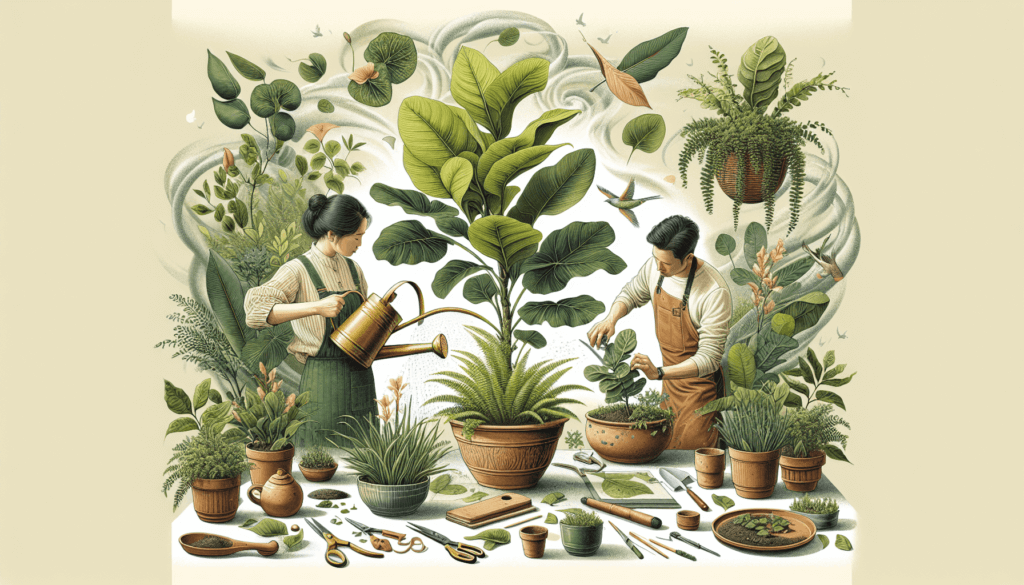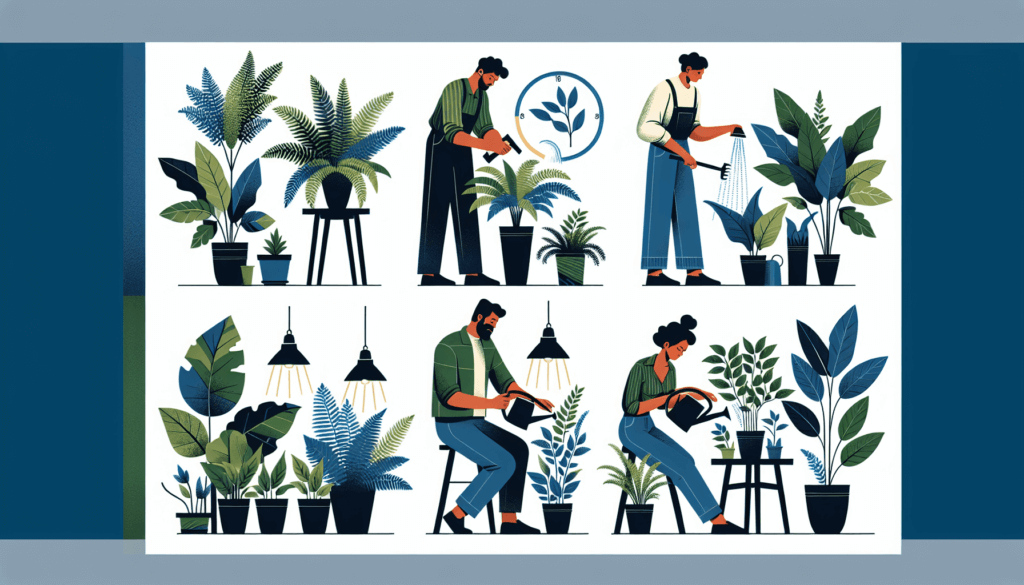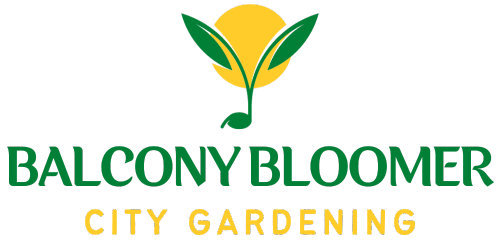If you are someone who loves having greenery in your home but struggles to keep plants alive, then this article is for you. We all know how delightful it is to have indoor plants – they add a touch of freshness and beauty to any space. However, it can be quite challenging to take care of them properly. In this article, you’ll find some useful tips and tricks for foliage plant care, so you’ll never have to worry about your plants wilting away again. Whether you’re a seasoned plant enthusiast or just starting to explore the world of indoor gardening, these simple guidelines will help you nurture your foliage plants and maintain a thriving indoor jungle.
Choosing the Right Foliage Plant
When it comes to choosing the right foliage plant for your home or office, there are several factors to consider. One of the most important factors is the lighting requirements of the plant. Some plants thrive in bright, direct sunlight, while others prefer a more shaded environment. By understanding the lighting needs of different foliage plants, you can ensure that you provide them with the appropriate amount of light they need to thrive.
Another consideration is the space available. Some foliage plants are compact and can fit in small pots or on shelves, while others require larger containers or floor space. It’s important to evaluate the space you have before selecting a plant to ensure that it fits well and has enough room to grow.
Researching the watering needs of foliage plants is also crucial. Each plant has its own specific watering requirements, and overwatering or underwatering can lead to problems such as root rot or dehydration. By understanding the watering needs of your chosen plant, you can ensure that you provide it with the right amount of water to keep it healthy and thriving.
Lastly, before bringing a foliage plant into your space, it’s essential to check for pests and diseases. Infestations or diseases can spread quickly and have a negative impact on the health of your plant. By inspecting the plant thoroughly and treating any issues before introducing it to your collection, you can prevent potential problems and ensure the well-being of your other plants.
Providing Adequate Lighting
Proper lighting is crucial for the growth and development of foliage plants. Each plant has specific lighting requirements, and understanding these requirements is essential for providing the best conditions for your plants.
To understand different lighting conditions, consider the natural environment of the plant’s native habitat. Some plants thrive in bright, direct sunlight, while others prefer partial shade or indirect light. By mimicking these conditions as closely as possible, you can ensure that your foliage plants receive the ideal amount of light.
Placing plants near windows is often a great way to provide them with natural light. South-facing windows tend to receive the most intense sunlight, while north-facing windows provide the least. East and west-facing windows offer a balance of sunlight throughout the day. By observing the lighting conditions of the windows in your space, you can place your foliage plants in the most suitable location.
In situations where natural lighting is insufficient, artificial lighting can be used. LED grow lights or fluorescent lights can provide the necessary light spectrum for plant growth. When using artificial lighting, make sure to position the lights at an appropriate distance from the plants to prevent burning or heat damage.
To ensure even exposure to light, regularly rotate your plants. This will prevent them from growing unevenly and encourage uniform growth and development.

Watering Techniques
Watering foliage plants correctly is essential for their overall health and well-being. The watering schedule, the type of water used, and avoiding overwatering are all key factors in ensuring proper hydration without causing harm.
Determining the watering schedule for your foliage plants depends on their specific needs. Some plants prefer consistently moist soil, while others prefer to dry out slightly between watering. Research the watering requirements of your specific plants and establish a schedule that works best for them.
Choosing the right type of water is crucial as well. Tap water may contain chemicals such as chlorine or fluorine that can be harmful to some plants. Using filtered or distilled water can help ensure that your plants receive clean, pure water. Additionally, rainwater can be an excellent choice for watering your foliage plants, as it is naturally free of additives.
Avoiding overwatering is a common mistake that can lead to root rot and other issues. It’s important to allow the soil to dry out slightly between waterings to prevent waterlogged roots. Test the moisture level of the soil by inserting your finger into the soil up to the first knuckle. If it feels dry at this depth, it’s time to water your plant.
Monitoring soil moisture levels is crucial for maintaining proper hydration. Invest in a moisture meter or simply feel the soil with your finger to determine when it’s time to water. Each plant has different moisture requirements, so it’s essential to be attentive to the individual needs of your foliage plants.
Maintaining Proper Humidity Levels
Humidity plays a significant role in the health and well-being of foliage plants, as they often originate from tropical or subtropical regions with high humidity levels. Providing adequate humidity in your indoor environment is essential for the optimal growth and thriving of your plants.
Knowing the preferred humidity range for your foliage plants is important. Some plants thrive in high humidity, while others can tolerate lower levels. Research the specific requirements of your chosen plants to determine the best humidity levels to maintain.
Using humidifiers or trays of water can help increase humidity levels around your plants. Placing a humidifier near your foliage plants can provide a constant source of moisture in the air. Alternatively, you can fill trays with water and place them near your plants. As the water evaporates, it increases the moisture in the surrounding atmosphere.
Grouping plants together can also create a microclimate with increased humidity. When plants are placed close to each other, they naturally release moisture through transpiration, creating a more humid environment. This technique is particularly effective for plants that prefer high humidity.
Misting the foliage is another method to increase humidity. Simply use a spray bottle filled with water to mist the leaves of your plants. This provides a temporary boost of humidity and can be done regularly to maintain optimal conditions.

Fertilizing and Nutrient Requirements
Proper fertilization is key to ensuring that foliage plants receive the necessary nutrients for healthy growth and vibrant foliage. Understanding which fertilizer to use, how much to apply, when to apply it, and monitoring nutrient deficiencies are all essential aspects of foliage plant care.
Choosing the right fertilizer is important as different plants have different nutrient requirements. Look for fertilizers specifically formulated for foliage plants, as they typically contain higher nitrogen levels, which promote lush foliage growth. Alternatively, organic fertilizers can be a great option as they provide slow-release nutrients that are less likely to cause fertilizer burn.
Following the recommended application rate is crucial, as over-fertilization can damage the roots and burn the foliage. Read the instructions on the fertilizer packaging carefully and apply the appropriate amount to your plants. It is often better to under-fertilize slightly rather than over-fertilize, as excess nutrients can lead to imbalances and harm the overall health of the plant.
Applying fertilizer during active growth periods is recommended. Foliage plants typically experience more growth during the spring and summer months, so this is when they will benefit most from fertilization. Avoid fertilizing during the dormant winter months when the plant’s growth is minimal.
Monitoring nutrient deficiencies is essential for maintaining the health of your foliage plants. Yellowing leaves, slow growth, and poor overall appearance can indicate nutrient deficiencies. Conduct regular inspections of your plants and address any deficiencies promptly by adjusting your fertilization routine or providing specific nutrient supplements.
Pruning and Trimming
Regular pruning and trimming are essential for maintaining the health and aesthetics of foliage plants. By removing yellow or diseased leaves, pruning overgrown branches, and shaping the plant, you can promote healthy growth and maintain an attractive appearance.
Yellow or diseased leaves should be promptly removed to prevent the spread of diseases or infestations. These leaves often lack chlorophyll and can negatively impact the overall health of the plant. Use clean and sharp pruning shears to make a clean cut at the base of the leaf stem or branch.
Prune overgrown branches to maintain a compact and well-shaped plant. This promotes better airflow and prevents overcrowding, which can lead to pest infestations or the development of diseases. Trim back any branches that are extending beyond the desired shape or size of the plant.
Shaping the plant for aesthetic purposes is an enjoyable aspect of foliage plant care. Regular pinching or pruning can help create a bushier, fuller plant or train it to grow in a specific direction. Be mindful not to excessively prune, as this can stress the plant and inhibit its growth.
Preventing and Treating Pests
Pests can wreak havoc on your foliage plants if not addressed promptly. Regular inspections, using organic pest control methods, isolating infested plants, and consulting with professionals if necessary, are all crucial steps in preventing and treating pest issues.
Inspecting the plant regularly is essential for catching any pest infestations early on. Look for signs such as chewed leaves, webbing, or small insects on the plant. Pay particular attention to the undersides of leaves and the plant’s crevices, as these are common hiding spots for pests.
Using organic pest control methods is recommended to minimize harm to the plant and the environment. Neem oil, insecticidal soap, and horticultural oils are effective options for treating common pests such as aphids, mealybugs, and spider mites. Follow the instructions carefully and apply the treatments as needed.
Isolating infested plants is crucial to prevent the spread of pests to other plants. Remove the affected plant from its usual location and quarantine it in a separate area until the pests are eradicated. This will help protect your other plants from infestation and allow you to focus on treating the affected plant effectively.
Consulting with a professional is advisable if pest infestations persist or if you are unsure about the appropriate treatment methods. Pest control experts can provide valuable advice and recommend specific treatments or techniques to address the pest issue effectively.
Dealing with Common Diseases
Just like any other plants, foliage plants can be susceptible to various diseases. Identifying symptoms, quarantining infected plants, providing proper air circulation, and applying suitable fungicides or pesticides are all important steps in dealing with common diseases.
Identifying symptoms of diseases is crucial for early detection and treatment. Look for signs such as yellowing or browning leaves, spotting, wilting, or stunted growth. Research common diseases that affect your specific plants and compare the symptoms to determine the likely cause of the issue.
Quarantining infected plants is vital to prevent the spread of diseases to other healthy plants. Isolate any plant showing signs of disease, even if you are unsure of the specific cause. This will protect your other plants and allow you to address the issue without further contamination.
Providing proper air circulation is crucial for maintaining a healthy environment for your foliage plants. Good air movement helps prevent moisture buildup, which can contribute to the development of fungal diseases. Use fans or open windows to promote airflow and reduce the risk of diseases.
Applying suitable fungicides or pesticides can be necessary to treat certain diseases. When selecting these products, choose ones specifically formulated for the disease you are targeting. Follow the instructions carefully and apply the treatment as directed.
Repotting and Transplanting
Repotting and transplanting foliage plants is necessary when they outgrow their current containers or when the soil becomes compacted and drained. Knowing when to repot, choosing the right potting mix, handling the plant with care, and monitoring the plant’s recovery are essential elements of successful repotting and transplanting.
Knowing when repotting is necessary is important to prevent root-bound plants. Signs of a plant needing repotting include roots growing out of the drainage holes, stunted growth, or the plant toppling over due to an unstable root system. Ideally, repot your foliage plant when it is in its active growing phase to maximize its chances of successful adaptation.
Choosing the right potting mix is crucial for providing adequate drainage and nutrition. Opt for well-draining mixes specifically formulated for foliage plants. These mixes often consist of a combination of peat moss, perlite, and vermiculite to promote healthy root growth.
Handling the plant with care during the repotting process helps minimize stress and damage. Gently loosen the roots and remove any excess soil before transferring the plant to its new container. Avoid pulling or tugging on the plant as this can cause root damage.
Monitoring the plant’s recovery after repotting is essential. Place the newly repotted plant in a location with proper lighting, humidity, and temperature conditions. Water the plant lightly and monitor its response. It’s normal for a plant to go through an adjustment period after repotting, so be patient and provide gentle care as it acclimates to its new environment.
Troubleshooting Common Issues
Despite our best efforts, foliage plants can sometimes experience issues that require troubleshooting. Some common problems include yellowing leaves, wilting or drooping foliage, leaf browning or burn, and stunted growth. By identifying the underlying causes and taking appropriate action, you can resolve these issues and restore the health of your plants.
Yellowing leaves can be caused by a variety of factors, including overwatering, underwatering, nutrient deficiencies, or pest infestations. Evaluate the watering habits, nutrient regimen, and inspect the plant for any signs of pests. Adjust your care routine accordingly to address the specific cause of yellowing leaves.
Wilting or drooping foliage is often a sign of underwatering or excessive heat. Check the soil moisture level and adjust your watering schedule if necessary. Ensure that the plant is not exposed to direct sunlight for extended periods, as this can cause wilting. If the issue persists, consider increasing humidity levels around the plant.
Leaf browning or burn can occur due to several reasons, such as exposure to direct sunlight or overly hot temperatures, overfertilization, or chemical exposure. Move the plant to a location with less intense light or provide shade during the hottest parts of the day. Adjust your fertilization routine if you suspect an excess of nutrients. Avoid exposing the plant to chemicals or pollutants.
Stunted growth can result from various factors, including insufficient light, nutrient deficiencies, root-bound conditions, or pest infestations. Evaluate the lighting conditions, adjust your fertilization routine, check for signs of pests, and consider repotting the plant if it has become root-bound. By addressing these factors, you can promote healthier and more vigorous growth.
In conclusion, caring for foliage plants requires attention to their specific needs and providing them with the right conditions to thrive. By considering lighting requirements, evaluating available space, researching watering needs, and checking for pests and diseases, you can ensure that you choose the right plants and provide them with the optimal care. Adequate lighting, proper watering techniques, maintaining proper humidity levels, providing the right nutrients, regular pruning and trimming, pest prevention and treatment, disease management, repotting and transplanting when necessary, and troubleshooting common issues are all essential components of successful foliage plant care. With these guidelines in mind, you can enjoy the beauty and benefits of foliage plants in your home or office for years to come.


